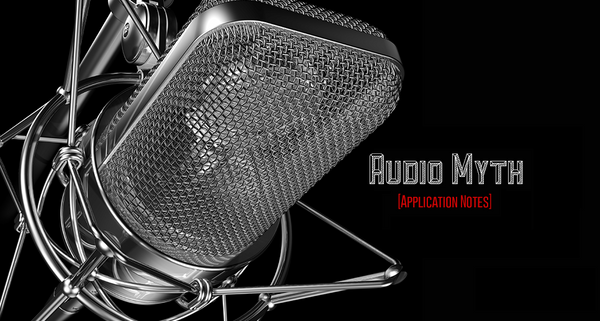Caporegime
- Joined
- 20 Oct 2002
- Posts
- 78,024
- Location
- Wish i was in a Ramen Shop Counter
Let's go !
Openheart 4.4mm/XLR from Aliexpress. The other benefit of going balanced is that you can make use of the higher power output a fully balanced DAC gives you vs unbalanced connections, means less need to crank the volume several dB higher.
All fully balanced DACs and amps provide the better output on the balanced ports you get amps with balanced ports that are "convenience" ports only and aren't internally balanced though but all fully balanced amps provide more power through those ports unless there are corners being cut.
careful with your wording though, where did you see balanced ports have worse measurements? The entire nature of balanced is to provide a lower noise floor and higher power output, we wont' hear the lower noise floor because unbalanced on a good DAC or amp is already completely silent to human ears, but we will hear the increase in power. I can swap to the single ended output right now and need to crank up the volume several dB in order to get the same loudness from the headphones for example.
You can get high power single ended outputs too that don't feature fully balanced architecture, they are in the minority as fully balanced is the preferred approach.


Sometimes a customer will ask, "Should I use the balanced outputs or the single-ended outputs?" If it's not a true balanced design, most of the time we'll recommend using the single-ended outputs, because it's very possible that depending on how they manufactured the pseudo-balance, it can actually deteriorate the sound, even though there's a voltage increase on that output. Feel free to reach out to us about specific hardware you may be considering; we’ll be more than happy to take the time to determine if it is the right piece for your system.
If you compare the single-ended output to the balanced output on the same product, and it's a true balanced headphone amplifier, the balanced will always sound better than the single-ended. On an Astell&Kern player, the 2.5mm output will always sound better than the 3.5mm output.
That is unless you have an IEM or a headphone with an abnormal impedance rating. The Shure SE846 Pro Gen 2 Earphones have an abnormal impedance rating that actually sounds better on the single-ended than the balanced. That's a really rare case. There's a custom 300V Cary Audio amp we used to make as an upgraded version of the original single-ended headphone amp. It's an example of a single-ended amp that sounds better than most of the balanced headphone amps we sell, except for maybe the Auris Audio Nirvana IV Headphone Amplifier. Ultimately, it comes down to the design.
That's an article from 10 years ago, a heck of a lot has changed in this whole scene in the last few years alone no? Back in 2016 it probably was the case that balanced headphone amps weren’t so great.
I've not seen anything in modern times pointing to obvious flaws in balanced headphones outputs in a fully balanced amp, here's a 2024 article by moon audio I just quickly Googled for ref:

Balanced vs. Unbalanced Headphones: Which is Better?
Why Your Headphones May Be Holding You Back: What Audiophiles Know Arguably, one of the most common misconceptions in the world of audio equipment and recording studios is that headphones can be balanced and unbalanced. Whether you’re working with guitars, keyboards, or high-end audio gear, it’s...www.moon-audio.com
They say:
Which aligns with what's said earlier, the design of the amp matters the most, as does the specific quality of cable used, and not to use unbalanced to balanced adapters which goes without saying.
Reddit - The heart of the internet
www.reddit.com
"Heard the Fosi i5 first. Comfy, looks like a Susvara. At first glance the bass is pretty good. It's elevated with a good amount of body and heft. Midrange has a vocal forwardness to it which some people might like. There's a sizable midtreble peak somewhere that's fairly prominent and brings sibilance. Not intolerable for me, but pretty close to being too much. It's less intensely sharp/harsh than some of the HiFiMan peaks can be. Decent staging, feels fairly open."


Audio Myth - Balanced Headphone Amplifiers are Better
This Myth Goes Something Like This: "Balanced headphone amplifiers are better." "If balanced line-level connections work well, balanced headphone outputs should also work well." We disagree! Benchmark does not offer voltage-balanced headphone outputs on any of its products. The reason for this...benchmarkmedia.com
Balanced headphone outputs don't work the same way as balanced inter connects between a dac and an amp do. The balanced connect between a dac and amp works actively to sum the signals and cancel out noise picked up in the cable. Headphones can't do this. Running fully differential balanced headphone amplification means running two seperate amps and signals to each driver, this doubles the output impedance and doubles the noise. It's likely not audible as said but technically its worse.
The main benefit of balanced headphone outputs is for portable audio where it can increase the output power for a set voltage. Obviously in desktop setups the input voltage is not limited and designing a better higher-powered single ended output would be superior.
The issue is audiophiles love buzzwords and snake oil and are willing to spend a significant amount of money on something they perceive to be superior, hence all the products and marketing around balanced devices. Its especially prevalent in chi-fi brands where they need the buzz and "features" to market and sell their products.
Running fully differential balanced headphone amplification means running two seperate amps and signals to each driver, this doubles the output impedance and doubles the noise. It's likely not audible as said but technically its worse.
I see mrk has already commented on it
Same@mrk How much did they take from your card for the i5?
Mine came to £341 for the one with the extra cable.
Precisely why I use NVA hi-fi (mono blocks, passive pre-amp & phono pre-amp).There is something to be said for owning gear from a company that seems to genuinely have a passion for what they do, hand built, a story and history behind them, and the support also, your not just buying specs.
This is spot on, especially regarding chi-fi brands, they pushed 'balanced' hard as a golden feature to give people a reason to upgrade, they have the capacity to move a lot quicker than the western market having quite big influence over headphone amp design over recent years, they have started doing the same with relay volume controls being pushed as the next 'audio wonder', and they are still squeezing the lemon out of the R2R DAC tech also, I think surely after a slew of mega 10w relay volumed controlled R2R amp/dac combos with VU's (cue Homer Simpson car) they will of ran out of ideas/mud to throw at the wall.
Will be sticking with the Tripowin 4.4mm for main use.

